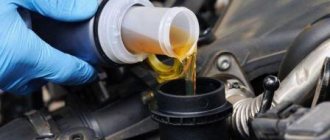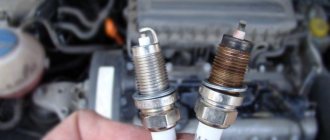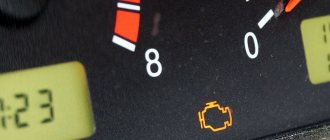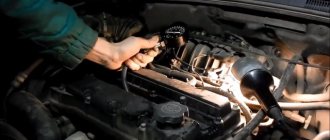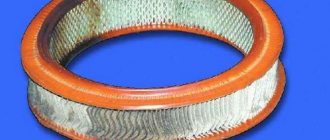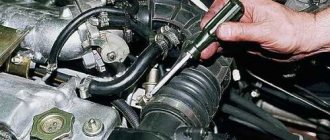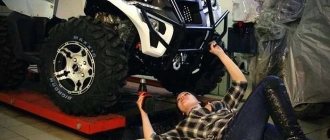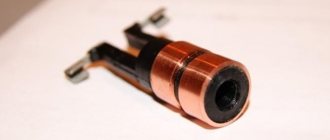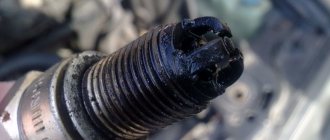When to perform break-in after replacing piston rings
Installing new components into an engine always requires a break-in period. This applies not only to piston rings. It is well known that break-in is required after a major overhaul of the engine, or if the engine is completely new.
The break-in procedure itself implies that the components “grind in” to each other. When replacing piston rings, running-in is required so that they get used to the piston or cylinder. Despite the fact that the dimensions of the parts are standard, they wear out during operation due to a number of technological features. Accordingly, by installing new rings into an engine where old parts remain, complete size matching cannot be achieved. That is, it takes some time to break in the engine so that the parts fit together perfectly.
Why is the engine broken in?
Running in the engine after a major overhaul is necessary to ensure uniform grinding of the rubbing surfaces. Despite the fact that modern materials and processing methods make it possible to obtain surfaces without scuffing, rubbing parts have some roughness. For the most part, this applies to the cylinder-piston group. Thus, a repaired cylinder block and new pistons have deviations in size and surface defects.
- adjust the mating of parts and reduce wear;
- minimize deformations;
- stabilize oil consumption;
- check the result of the overhaul.
During operation of the internal combustion engine, a large amount of heat is generated. Thus, the piston bottom heats up to 300℃ from interaction with the combustible mixture. The part is cooled through compression rings. In contact with the cylinder walls, the piston rings release heat, which goes away along with the lubricant.
During long-term operation, the piston rings rub against the cylinder walls. After the overhaul, the “connection” disappears. This is why you cannot reinstall used rings: they were “sharpened” to fit other dimensions of the cylinder and are not suitable for further work.
Failure to run-in leads to poor heat transfer from the piston to the cylinder. In turn, this causes overheating of the piston, detonation, deformation of the piston rings, or burning of the entire part.
To reduce break-in time, spare parts manufacturers have developed new profiles of compression rings: beveled, rounded, ribbed with tin filling, etc. Two-stage cylinder honing also affects the running-in regime, since the surface is run-in at a micro level.
What types of engine running-in are there?
Proper engine running-in is an important component of success. It is important to understand that there are several types of break-in:
- After major renovation. Run-in after a major overhaul assumes that all engine components need to be ground in, since most of them are changed (usually, after a major overhaul, only the cylinder block and its head remain). That is, in fact, a new engine appears before the driver. It is better to run it in at a service center using special equipment;
- After a partial overhaul of the engine and replacement of some components. This includes running in after replacing the piston rings. This run-in is performed directly on the road. There are rules that need to be followed and these will be discussed below.
It is worth noting that when overhauling an engine in a “garage,” drivers often perform a run-in “in combat conditions,” that is, on the road, without using special equipment. This is not entirely correct and can lead to a decrease in the service life of the motor.
Types of running-in
There are usually two types of running-in. They need to be distinguished. After all, correct use of this procedure can increase the resource by up to 20%. This is a very good indicator that will allow you to save on further engine maintenance.
Typically, break-in is understood as a procedure that is performed after a major overhaul of the engine. As a rule, in this case, all the main components are completely replaced, usually only the block and its head are left. In this case, you get an almost new motor. But in order for the parts to get used to each other, a thorough running-in is required. Large services use special stands for the initial procedure. This is impossible in a garage, so you just need to carefully monitor the operating mode of the engine while traveling.
Another point is a partial overhaul of the engine.
. This includes the break-in we analyze after changing the piston rings. Here you need to monitor the process a little less, but there are some nuances that simply need to be taken into account. Also, usually in this case, the mileage for grinding in is shorter, which speeds up the process. Below we will consider in more detail all the listed varieties, so you are guaranteed to avoid mistakes after repair.
How long to run an engine after a major overhaul?
How long it takes to run-in after an engine overhaul depends on the test method. An incorrectly carried out test leads to jamming of the motor on the first day. To avoid breakdowns, you need to act carefully and follow the prescribed inspection regime.
On average, the grinding-in of internal combustion engine parts lasts 3000 - 8000 km. You can determine the readiness of the engine by its responsiveness and torque: after pressing the gas pedal, the car cheerfully takes off and confidently accelerates at full speed.
Engine overheating
It is also possible that the engine gets very hot after replacing the rings. Most often this is accompanied by increased vibration.
Possible problems:
- shrinkage of compression rings;
- erasing liners;
- roller wear.
If problems are observed with engine thrust, it is necessary to conduct a superficial diagnosis. The valve seals are inspected; it is important to check the position of the rings. The gaskets must be in place, there should be no large cracks or bulges. The upper liners must be clean without obvious abrasions.
The belt and rollers are also subject to inspection. When replacing rings, you can ask a specialist for more information about the cylinder measurements. There is special equipment for measuring the ellipse of elements. The technician inspects the gaps in the locks. If the engine overheats on a regular basis, the rings will have to be changed urgently.
When is it needed?
First, let's figure out when it is required. Naturally, the answer will be - after replacing the piston rings, but not everything is so simple here. People often argue that not in all cases it is necessary to break in the engine. For example, there is a fairly stable idea that if no grinding has been done, then running in is not required. Unfortunately, it is not. Let's look at why this is a false statement.
In any case, if you removed the piston, it means you did some work to replace parts. In our case, the piston rings were changed. Accordingly, no matter how correctly and carefully you install them, at first they will be a foreign body in the engine. This will happen until the rings rub against the piston and cylinder. You need to understand that break-in is necessary in any case when new components are installed in the engine.
You may be wondering why lapping the parts is necessary since they come in standard sizes. Indeed, the dimensions are standard, but this applies primarily to new engines. The fact is that during operation, cylinders and pistons wear unevenly, this is due to a number of technical features. Therefore, when you install new rings on a used motor, you are guaranteed to encounter a problem such as incomplete sizing, which leads to the need for adjustment.
How to break in after replacing piston rings
Before you begin the break-in procedure, you need to prepare the car. A few steps to follow:
- Charge the battery;
- Before heading out on the road for the first time, first start the engine and wait until it warms up to 80 degrees Celsius. After this, you need to turn it off and wait until the engine cools down to 40 degrees Celsius. Then the engine warms up again to 80 degrees. You need to perform 8-10 such cycles. This is necessary so that preliminary “grinding in” of the parts occurs, caused by their expansion as a result of heating;
- After completing the preliminary step, inspect the car and engine. You need to make sure that there are no leaks of antifreeze, oil or other liquids. If a problem is identified as a result of the inspection, it must be corrected;
- Choose the right section of road to drive. It is better that this is a route with a small number of cars and no elevation changes, that is, it is necessary to exclude entry to and from the slope. You also need to minimize the likelihood of getting stuck in a traffic jam.
Important: The book on technical operation of a specific car model may discuss the issue of engine break-in. Be sure to read and follow the manufacturer's recommendations.
Experts recommend running in the car engine after replacing the piston rings for 1,500 kilometers. The break-in process itself should take place, on average, at 2500 rpm; it is better to do it in third gear. This recommendation will allow you to optimize the process of “grinding in” the rings to the piston and cylinder.
It is better to cover the first 300 kilometers in one ride. A country track is ideal for grinding in. The next 1,200 kilometers must be covered in the same mode, but no matter how many trips, that is, operation can be carried out in a schedule that is comfortable and familiar to the driver.
Important: After traveling 1500 kilometers, it is necessary to replace the oil filter and oil.
(
179
voice, middle:
4,55
out of 5)
Loading…
Features of running a scooter after replacing the piston
To give recommendations for running-in after repair, you should first consider the reasons leading to the repair and methods of restoration. After a comprehensive piston replacement, mandatory running-in of the power unit is required. It should be noted that it is not necessary to resort to replacement if any problems arise with the vehicle, be it poor acceleration, lack of normal starting, and so on. Practice shows that there are only two reasons for a comprehensive piston replacement:
- gradual wear of the piston and cylinder, which leads to poor compression inside the combustion chamber;
- the appearance of scuffing inside due to foreign objects getting into the structure, failure of rings, and so on.
To determine the presence of poor compression, it is enough to use a special device - a compression meter. Having discovered that the compression ratio is less than 7.0 atm, you should think about completely replacing the piston group.
What to do if you don’t have a compression gauge on hand? In this case, the check is carried out in the following way. If you think that the moped is difficult to start due to low compression, just pour a little engine oil into the spark plug hole. Having discovered that the engine starts to start better, the absolute cause of the problem is the presence of poor compression in the engine.
What to do if wear occurs?
Having discovered that the problem lies in the failure of the cylinder-piston group (CPG), you can use two methods. The first is to purchase the entire CPG, but this option requires large financial investments. However, the owner will not have to waste time searching for a turner on his own and will be able to complete the replacement procedure without outside help.
On the other hand, if you have an original cylinder, it becomes possible to bore the worn-out one using turning equipment. The procedure is as follows: the owner takes the old cylinder with him to the turner. The specialist visually assesses the condition, after which he indicates the repair size. There are four in total:
These numbers indicate an increase in millimeters to the existing diameter. This amount of metal is ground down during the processing of the inner walls of the cylinder. When boring, the coefficient of thermal expansion of the metal that occurs during engine operation must be taken into account. Therefore, another fifth hundredth of a millimeter (0.05) is added to the indicated number. This will not affect the compression level in any way, and the power unit will not receive a temperature wedge. After assessing the bore diameter, you will have to buy a repair piston. Having purchased it, they pass it along with the cylinder to the master for boring.
Features of removal and installation
First rule. When performing work, it is imperative to maintain cleanliness. Before dismantling the power unit, you should go to the car wash and remove all remaining dried dirt and dust using a high-pressure washer. Using a special cleaning agent, the engine housing is washed. You cannot wash a hot engine, since a sudden temperature change has a negative effect on the engine. Be sure to disconnect the battery. As soon as the body is processed, you need to wait a while until the motor dries out. Using compressed air from the compressor, remove all drops of water, and also treat the wire connections.
Methods for running in the engine
You can properly run in the assembled engine after a major overhaul using stands or during operation. At the service station, engine testing takes place in 3 stages:
- cold running;
- hot running without load;
- hot running with load.
The stands allow you not only to run in the engine, but also to check the quality of repairs. To do this, during the test the following is monitored:
- oil and coolant temperature;
- line pressure;
- crankshaft speed;
- developed power;
- specific fuel consumption.
Run-in is considered complete when the parameters reach a certain range of values and the engine is operating properly:
- at idle speed and at maximum shaft speed;
- evenly in all modes, without sudden knocks and noise;
- there are no oil, fuel or coolant leaks through the connections.
Let's take a closer look at how internal combustion engines are tested in service stations and in garage conditions. The methods are equally suitable for both gasoline and diesel engines.
Run-in on the stand
The stands are suitable for both cold and hot running. The equipment is an installation with an electric motor, control and measuring devices and a cardan shaft for transmitting rotation. The equipment is controlled automatically according to a given program.
The stand is selected according to the engine power. After a major overhaul, the motor is mounted on the unit, lubricant and coolant are added, and the necessary pipes and electrical connectors are connected. The test is completed by inspecting the internal combustion engine:
- remove the pallet;
- inspect the main bearing shells and crankshaft journals;
- If necessary, remove the cylinder head and remove the pistons.
Cold running, unlike hot running, is performed at low speeds of the electric motor, not the motor. The test lasts 20 - 40 minutes with a gradual increase in the rotation speed of the electric motor. During the process they control:
- heating the area where the cylinders and main bearings are located by checking by touch;
- tightness of connections;
- uniformity of engine noise;
- oil pressure and temperature.
Similar article Timing marks for 406 ZMZ engine
For example, KamAZ-740 engines are tested according to the following scheme:
| Crankshaft speed, rpm | Mode time, min |
| 600 — 800 | 20 |
| 1000 — 1200 | 15 |
| 1300 — 1400 | 5 |
To reduce the inspection time by 2 times, low-viscosity oils and special additives are added to the internal combustion engine. This technological technique also makes it possible to reduce metal removal from running-in.
Benchless cold running
This option of cold engine running after overhaul is outdated. The car is attached to a tow rope and pulled in 3rd gear for several hours. This method does not allow tracking individual motor parameters and monitoring its condition.
Hot running
Hot running is the most popular method of testing a overhauled engine. It is carried out on a stand or on a machine with or without a load. Before testing on the stand, spark plugs are installed on the engine, the timing gaps are adjusted, and the power and fuel supply systems are connected. Running in the internal combustion engine is accomplished by rotating the crankshaft, so it is important to monitor the parameters of technical fluids.
During hot running without load, the internal combustion engine is started at a reduced crankshaft speed of 800 - 1100 rpm with a smooth increase in speed. The process takes from 20 minutes to several hours and is completed when half the nominal shaft speed is reached.
For example, the mode for engines ZMZ-405, 406 and 409 is as follows:
| Crankshaft speed, rpm | Mode time, min |
| 850 — 1000 | 5 |
| 1400 — 1600 | 5 |
| 1800 — 2000 | 5 |
| 2300 — 2500 | 5 |
The ZIL-645 test is carried out in 8 stages:
| Crankshaft speed, rpm | Mode time, min |
| 1400 | 10 |
| 1500 | 5 |
| 1800 | 5 |
| 2000 | 10 |
| 2200 | 10 |
| 2400 | 10 |
| 2600 | 5 |
| 2800 | 5 |
For running-in under load, the driveshaft of the stand is connected to the flywheel of the internal combustion engine. The electric motor will act as a generator and load the motor at the same time. The test is carried out with a gradual increase in electric motor power and crankshaft speed in accordance with the technical documentation.
For example, YaMZ-238 is checked according to the following scheme:
| Crankshaft speed, rpm | Load, kW | Mode time, min |
| 1500 | 10 | |
| 1600 | 29 | 10 |
| 1700 | 59 | 10 |
| 1800 | 88 | 5 |
| 1900 | 118 | 5 |
| 2000 | 147 | 5 |
Natural engine running-in
Natural or operational running-in is done without a stand and lasts for 2000 - 3000 km. To properly break in the engine after a major overhaul, you must follow the following rules:
- do not pull trailers, avoid slipping;
- keep the motor in the rotation range of 1500 - 4000 rpm;
- do not coast.
Similar article Engine temperature indicator and sensor on Lada Grant
Operational running-in of the engine involves a gradual increase in load:
- for the first 1000 km it is necessary to keep the speed to 3000 min-1;
- increase the next 1000 km to 3500 min-1;
- after 2000 km - up to 4000 rpm.
It is permissible to give a constant load to the engine after 5000 - 8000 km after repair.
Running in the engine after replacing rings and bearings
and how labor-intensive this process is.
All the rules noted in the article will help you ensure reliable and efficient operation of the car for a long time.
Moreover, inexperienced, just novice drivers have no idea why a break-in is necessary after any engine repair. Well, in this article I will try to touch on all the important aspects of this issue.
It should be noted that the first stage of engine break-in may not take place in motion, but in place. This will take you 2 or 3 hours.
At the same time, if necessary, adjust the ignition or power systems. Then follows the process of running the engine in motion.
The duration of the process in motion should be at least 2-3 thousand kilometers. However, the user also needs to be aware of the following things:
First launch after major overhaul
The first start of the internal combustion engine is carried out according to the following scheme:
- Fill in engine oil. It will take 10 minutes for the lubricant to fill the system. The oil filter is left dry to avoid air lock.
- Connect the fuel pump or supply fuel manually.
- Open the throttle manually if there is no automatic drive.
- Start the starter.
- Spin the motor up to 2000 rpm.
- Leave to idle for 15 minutes until engine rotation becomes stable at operating temperature.
- Turn off the unit and wait for it to cool completely.
Similar article: Correctly changing engine oil in a car engine
During startup, the pressure in the lubrication system is monitored. The indicator signal for 4 s indicates incorrect engine assembly. We urgently need to turn off the engine! If the pressure quickly stabilizes, the internal combustion engine is warmed up to operating temperature.
There should be no leaks upon visual inspection. In the first 3 minutes, the engine may knock: the hydraulic compensators are being pumped or the cups are running in. In the future, the sound should become uniform, without vibration. The appearance of a burning smell and slight smoke for the first start is normal - the assembly lubricants are burning through.
If the internal combustion engine is operating stably, start running-in. In order to properly run in the engine after a major overhaul, you need to understand the nuances of the test.
Why does the engine eat oil?
Sometimes, after replacing the oil scraper rings, grease continues to be wasted unnecessarily. In this case, the reason is probably not only in the rings. This usually happens when there are problems with valve stem seals.
This part can be found on the valves. They remove excess lubricant from them and prevent it from entering the combustion chamber. It is recommended to immediately replace the caps during any engine overhaul so as not to disassemble the engine twice.
Article on the topic “Why the engine eats oil but does not smoke.”
Conclusion
. Sooner or later the engine has to be repaired. In this case, running in the engine after replacing the piston rings is simply necessary. This work must be done correctly in order to significantly increase the service life of the repaired unit.
Master class: running in after repair
Many owners of their “iron horses” are faced with such a problem as engine “fatigue” and its further overhaul. Change the engine to another? No. Not a good idea. You can install the same “tired” one. Therefore, it is better to qualitatively sort out the old one. But there is one “but”...
One of the most important procedures affecting the service life of a vehicle is running in the engine after any repair work related to the replacement of worn parts with new ones. Moreover, this process must be treated no less responsibly than the repair work itself. Run-in is especially important for those engine components whose operation is associated with friction of its parts against each other, and the efficiency depends on the tightness of their fit.
As a rule, the duration of engine break-in is measured by the vehicle's mileage, the length of which directly depends on the nature of the engine repair:
— with minimal intervention (replacing the camshaft, chain, valves, etc.) 500 km is enough for break-in;
— after a high-quality overhaul, in which almost the parts of all the main components are replaced with new ones — 1500-2000 km;
- after a medium repair, when parts in the main components are partially replaced, a longer run is needed for running-in - up to 2500 kilometers.
For example, if the compression and oil scraper rings were replaced, but the pistons and liners remained old. This is due to the fact that new, unworn rings take much more time to “get used” to the old liners and piston grooves on their working surface than to the almost ideal surface of new parts. Therefore, running in the engine after replacing the rings is a mandatory event, which must be carried out in compliance with all the rules that exist for this process.
The main purpose of running in is to smooth out micro-irregularities by rubbing parts against each other to achieve a tight fit. Increased friction during “grinding in” causes increased heating of engine elements. Therefore, during this period, the power unit should operate in a gentle mode, with minimal loads. Below are the basic rules that must be followed during break-in after installing new piston rings on any type of engine.
An important role, which greatly influences the quality of running-in of a repaired engine, is played by its first start.
To carry out the first start of the engine, the battery must be fully charged, otherwise it may not cope with the first start.
For break-in, use only those brands of engine oil recommended by the manufacturer of your car.
In the absence of an electric fuel pump, fuel is pumped manually.
Start the engine and look at the oil pressure warning light located on the instrument panel. If the light does not go out after five seconds, turn off the engine and find out the reason for the low oil pressure. Under no circumstances try to increase the pressure by frequently pressing the accelerator pedal - running the engine in the absence of oil in its components can lead to rapid and irreversible damage to the surface of the rubbing parts.
If after starting the warning light goes out, then everything is fine with the oil pressure.
Warm up the power unit at idle to a temperature of 80-90°C. At the same time, be sure to ensure that there are no leaks of technical fluids. When the engine warms up, turn it off and wait until it cools down to 40-50°C. Then start the engine again and warm it up to 80-90°C again. This procedure must be carried out at least 10 times. Then you can move on to running at higher speeds and hit the road.
Rules for running the engine after replacing rings in road conditions:
- The vehicle should not be fully loaded.
- The speed of movement for the first 1000 km should not exceed 80 km/h, from 1000 to 2000 no more than 90 km/h.
- Shift gears in a timely manner.
- Avoid long climbs.
- Avoid sudden accelerations and prolonged periods of sitting in traffic jams.
- Constantly monitor the oil level.
- It is imperative to change the oil and filter after a run of 1000 km, because wear products appear as a result of the “grinding in” of parts.
- Upon completion of the break-in, it is also necessary to change the oil and filter. In addition, all accessible threaded connections are pulled (block head, oil pan, front cover, starter, generator). If necessary, valves, idle speed, belt tension or timing chain are adjusted.
Compliance with all these simple rules will allow you to properly run-in the engine after replacing the piston rings and ensure reliable operation of the car for a long time.
see also
Comments 27
if the pistons are old (that is, there has been no major repairs), then 500 km is enough, and then at least until the cutoff!
and I still couldn’t get through the break-in after replacing the rings... T__T
and how does it feel without running in? how far have you run?
who the hell knows) I’ll never get around to measuring the compression) 7-8 thousand
how does it feel? and how long did it take for it to start to pile on?
I didn’t have enough patience) and the carbs at that time were not yet properly tuned, they drove normally only after 3k revolutions
okay) I just changed the rings and head on mine, in about 20 minutes I’ll do the first launch and, as luck would have it, I have to go straight to the highway and head to another city. I’m wondering how long I’ll last)))
Well, I think 90 is not too hard to go without overtaking and it will be fine
I will try. ok let's go finish it
I replaced the rings on mine, drove about 500 km, changed the oil, now I drive in normal mode, rev the engine to 3.5 in every gear, at first there were overtones after 3000, now everything has returned to normal, the sounds are gone, the car drives boldly, cheerfully...
Oil selection and frequency of replacement
It is worth considering in more detail the issue of replacing lubricating consumables after a power plant overhaul. First, this must be done after 500 km. Then after 1000 and the last time after 2000 km. Use high-quality motor oil recommended by the manufacturer. After the specified kilometers have been covered, drain the used mixture and flush the engine. When running in, take into account the oil viscosity:
- in summer 15W40;
- in winter 5W30;
- in the intermediate season: 10
